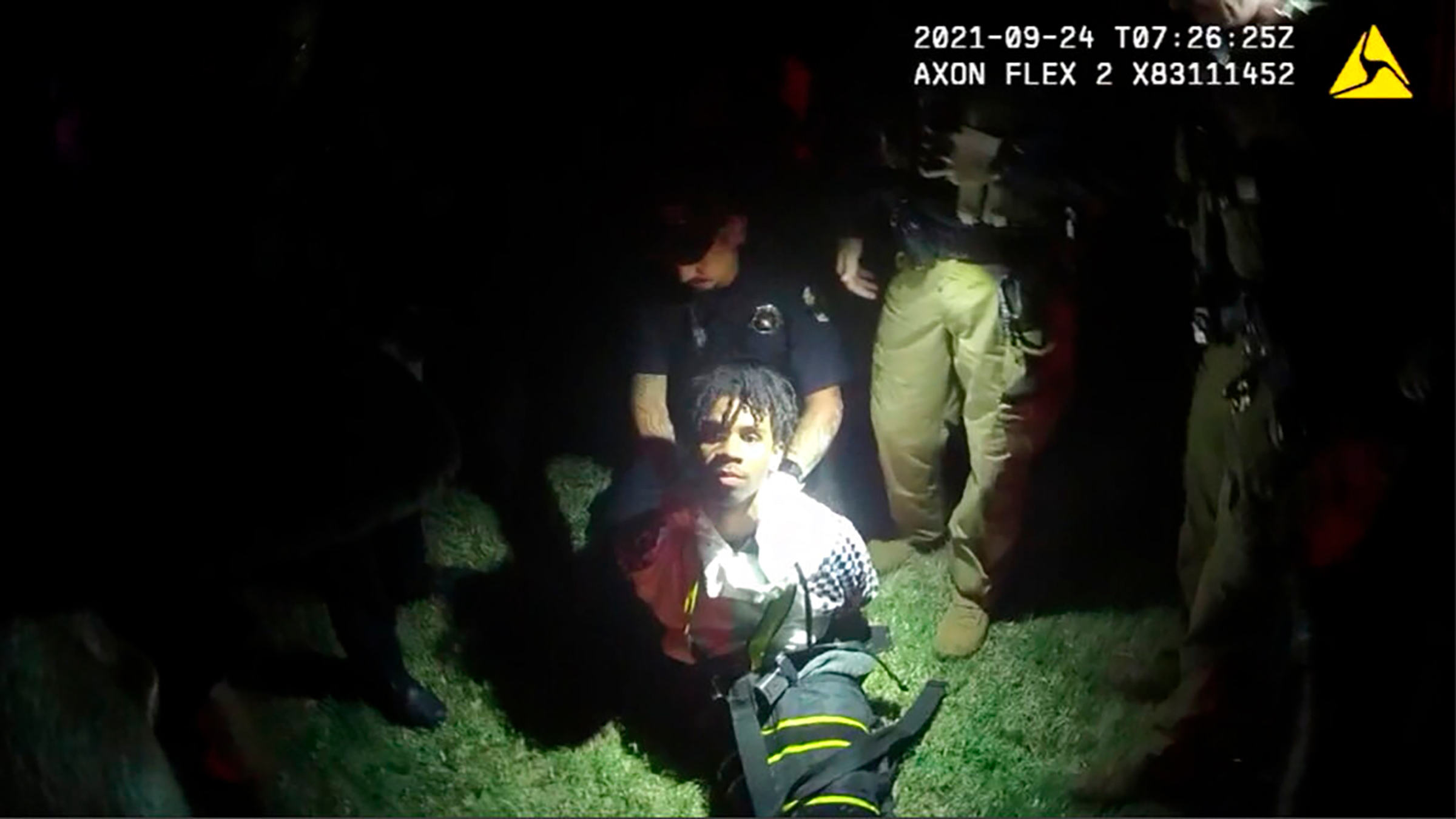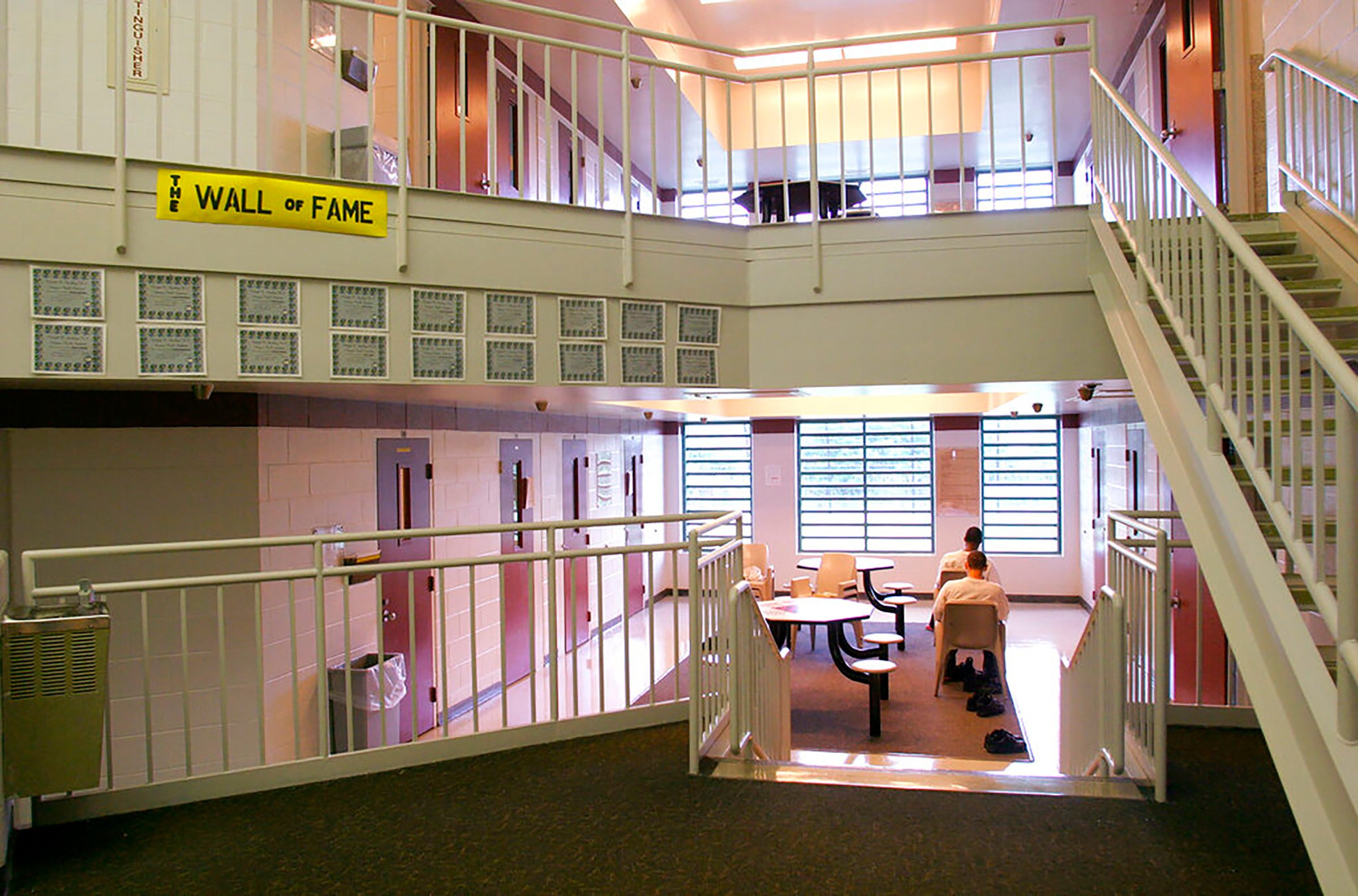
About 30 minutes. That’s how long 17-year-old Cedric “C.J.” Lofton was pinned to the floor with multiple adults holding him down at a youth carceral facility in Kansas. It may have been closer to 40. The medical examiner ruled his death on Sept. 26, 2021, a homicide resulting from “[c]omplications of cardiopulmonary arrest sustained after physical struggle while restrained in the prone position,” but the DA concluded that he would not charge the employees of the facility where C.J. died.
Even though an officer changed his answer on an intake form in a way designed to ensure C.J. would stay at the county Juvenile Intake and Assessment Center instead of a mental-health facility, even though C.J. was restrained for more than 30 minutes, and even though the center had allegedly ignored recommendations set down by the Kansas Department of Corrections years before, no one has been held accountable for his death.
Instead, the system rushed to blame C.J. himself for his death, with both the sheriff and the DA raising the possibility—later found to be utterly unsubstantiated—that drugs were to blame.
The DA defended his decision by pointing to Kansas’ stand your ground law and maintained that employees at the facility acted in self-defense. According to the DA, an unarmed child who weighed approximately 135 pounds posed an imminent threat of death or bodily harm to the multiple adults who forced him face-down into a prone position.
C.J.’s case is far from isolated and illustrates how the juvenile justice system in the U.S. harms children. The past decade alone has taken a grim toll. Loyce Tucker, Cornelius Frederick, Gynnya McMillen, and Elord Revolte are among those who died in youth facilities at the hands of adults or while entrusted to their custody. Suicides in youth carceral facilities have included a 17-year-old in North Carolina, a 13-year-old in Texas, and a 16-year-old transgender boy housed in a girls’ unit in Maine. There has been institutional negligence associated with the deaths of Andre Sheffield, 14, and Robert Wright, 17. Finally, there are the deaths in youth carceral facilities that remain unsolved or receive little attention: the 16-year-old girl in Georgia, the 16-year-old boy in California, the 16-year-old in Texas.

Even when youth do not die in youth carceral facilities, they are at risk of abuse and neglect by adult staff. In California, probation staff have been accused of sexually assaulting young girls. There have been horrific allegations of an officer permitting a “fight game” in Georgia, guards putting bounties on imprisoned youth in Tennessee, and security guards using excessive force in Texas. In Colorado, staff have reported other staff for alleged violations including drug smuggling and harassment. Youth facilities have been grossly understaffed since the pandemic began, a problem that continues in states like Louisiana and Texas. Notably, in some facilities, youth had to use water bottles and lunch trays as toilets because there was no one to take them to the restrooms.
Moreover, many youth are detained and confined in private facilities, which are not subject to open record laws in the same ways as public ones. However, even employees of public facilities are often protected by the system. These devastating harms to detained youth are a major reason that so many states, including California, Maine, and New Hampshire, are considering closing all youth carceral facilities or significantly reducing reliance on them.
Carceral facilities blame lack of staffing and increasingly violent children for these incidents. But it is not that. It’s not bad apples or agencies, understaffing, or solely the position in which Gynnya McMillen, Cornelius Frederick, and C.J. Lofton were restrained that is to blame for their deaths.
It is a carceral system that is committed to treating youth like criminals instead of recognizing that youth in crisis need care and resources.
To solve this problem, we need to listen to those most impacted by the systems, those who have experience within those systems: youth of color, youth with disabilities, queer and gender non-conforming youth, youth in foster care, medically vulnerable youth, and especially those at the intersections of multiple oppressions (e.g., queer youth of color, disabled youth of color) who are more likely to become incarcerated.
Currently and formerly incarcerated youth are telling us, with the backing of research, that the youth carceral system does not deliver racial justice, safety, or quality education. Instead carceral systems compound the violence youth have experienced in their personal lives, making them subject to violence by systems run by the state.
It doesn’t have to be this way. There are alternatives to detention and confinement that we know work. There are restorative pathways connecting youth with community resources that make youth less likely to reoffend than those that go through the courts. There are crisis response teams that respond to mental-health issues, like the one C.J. had, while reducing police violence and saving money in cities like San Francisco, but they are severely underfunded.
We need to abolish the youth carceral system, and all carceral systems, because they do more harm than good, are extremely costly, and do not keep us safe. Instead, we need to move the resources that we currently commit to carceral facilities–money, time, and people–into systems that focus on care and support for youth in need of help.
A year after C.J. Lofton’s death, there was a protest at the facility where he died, organized, in large part, by formerly incarcerated youth and C.J.’s family who are demanding #JusticeForCJ.
Formerly incarcerated youth know how terrifying it is to be transferred to a carceral facility while in distress, to face armed police officers and guards who suddenly have control of every aspect of their lives, to be under constant surveillance with the threat of violence if they do not comply no matter how unfair the request, to be met only with punishment even when in crisis.
Formerly incarcerated youth know that C.J.’s Black life matters so they are fighting for C.J. We need to fight too. We owe that to C.J., to the formerly incarcerated youth fighting for him, and to all youth who deserve to be cared for instead of criminalized. How many more can we lose?
More Must-Reads from TIME
- Introducing the 2024 TIME100 Next
- The Reinvention of J.D. Vance
- How to Survive Election Season Without Losing Your Mind
- Welcome to the Golden Age of Scams
- Did the Pandemic Break Our Brains?
- The Many Lives of Jack Antonoff
- 33 True Crime Documentaries That Shaped the Genre
- Why Gut Health Issues Are More Common in Women
Contact us at letters@time.com